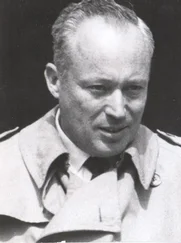Armageddon - Leon Uris
Здесь есть возможность читать онлайн «Armageddon - Leon Uris» весь текст электронной книги совершенно бесплатно (целиком полную версию без сокращений). В некоторых случаях можно слушать аудио, скачать через торрент в формате fb2 и присутствует краткое содержание. Жанр: Старинная литература, на английском языке. Описание произведения, (предисловие) а так же отзывы посетителей доступны на портале библиотеки ЛибКат.
- Название:Leon Uris
- Автор:
- Жанр:
- Год:неизвестен
- ISBN:нет данных
- Рейтинг книги:4 / 5. Голосов: 1
-
Избранное:Добавить в избранное
- Отзывы:
-
Ваша оценка:
- 80
- 1
- 2
- 3
- 4
- 5
Leon Uris: краткое содержание, описание и аннотация
Предлагаем к чтению аннотацию, описание, краткое содержание или предисловие (зависит от того, что написал сам автор книги «Leon Uris»). Если вы не нашли необходимую информацию о книге — напишите в комментариях, мы постараемся отыскать её.
Leon Uris — читать онлайн бесплатно полную книгу (весь текст) целиком
Ниже представлен текст книги, разбитый по страницам. Система сохранения места последней прочитанной страницы, позволяет с удобством читать онлайн бесплатно книгу «Leon Uris», без необходимости каждый раз заново искать на чём Вы остановились. Поставьте закладку, и сможете в любой момент перейти на страницу, на которой закончили чтение.
Интервал:
Закладка:
“Beaver, I see by a decent paper, The Stars and Stripes, that Bob Hope is giving a show in Paris. It is my opinion that Bob Hope would be good for the morale of our people.”
“Excellent idea, sir. I’ll write an invitation for your signature.”
Hiram Stonebraker shook his head, no.
“You go to Paris and bring Bob Hope back with you, personally.”
“But ... but ... but ...”
“Beaver, I believe in you.”
“Yes, sir,” he croaked. He slunk toward the door.
“And Beaver,” the general said, chuckling devilishly, “don’t come back without him.”
Chapter Sixteen
CLINTON LOVELESS WAS DEEPLY involved in the Airlift Control Center of Headquarters on Taunusstrasse in Wiesbaden. Here were direct lines to Frankfurt Air Traffic Control Center and Tempelhof Approach and Gatow and all the fields in the zones. Minute to minute records were kept twenty-four hours a day recording movement of all air traffic, the status of each squadron, weather maps, and forecasts. And mainly, the Howgozit board showing the tonnage set down in Berlin. In these days it had edged to three thousand tons a day.
Statistical Service turned the Control Center and the staff conference room into mazes of charts and graphs showing turn-around times, engine availability, utilization of craft, flying hours per crew, and all those facts needed to keep a precision control as accurate as the precision of flying in the corridor itself.
A dozen Skymasters from the 46th at Bergstrom had come; sixteen from the 22d Transport from Fairfield, California; nine came from Great Falls, Montana; they came from Westover; more were on the way from Hickam and Tokyo and Kelly in Texas; the Airlift was growing larger than its parent, MATS.
The Air Materiel Command secured spare parts from all over the world and manufacturing lines rolled again for yet more parts. At Erding outside Munich a German/ American manual of parts was written and German technicians hired to fill the growing gap prepared to renew 40,000 spark plugs a month and break down and reconstruct any and all instruments in the Skymaster.
The unpronounceable base of Oberpfaffenhofen, known as Obie, was activated for the two-hundred-hour overhaul; engine build-up was begun at Rhein/Main; daily spare-parts trains ran from Obie and Erding to the new rail head of Zeppelheim, which fed into Rhein/Main and Y 80.
Ten thousand Americans were there or on the way and with other thousands of British, Germans, and displaced persons some 50,000 people would be involved in supplying Berlin.
A Sea Lift to support the Airlift, called Marine X, poured in ten million gallons of aviation fuel a month and brought in new engines built in Texas and wheat from Canada.
The Headquarters of the Weather Wing was established in a confiscated house once belonging to the Von Ribbentrops, which had been used as a Gestapo horror house. They built up the most extensive system of gathering weather data from stations around the world ever known to aviation.
At Rhein/Mud the Operations office had a sign which read: COAL AND FEED STORE, FREE DELIVERIES, H. BALL BREAKER, PROPRIETOR.
In the Pilot’s room at Y 80 another sign read: CONGRATULATIONS, YOU MADE IT AGAIN.
As the Americans flew the southern corridor with ever-growing precision the British flew into the northern corridor out of their fields at Fassberg, Celle, Lübeck, Fühlsbuttel, and Wünstorf.
As August wore on it became apparent that closer liaison would have to be established with British Headquarters which was located in the medieval town of Lüneburg and exchanges of personnel began to take place.
British Operation Plain Fare put on a magnificent show. The British had but a hundred aircraft, many of which were Dakotas, their counterpart of the Gooney Bird. They were closer to Berlin than the American Zone so their craft could make three round trips a day, but they had only two crews for each craft.
The main British effort was flour, which accounted for half their cargo tonnage. The British solved the cumbersome problem of flying in Berlin’s gas and oil, which was loaded in bulky barrels. They contracted civilian tanker planes. Shortly, the Tudors and Lancasters flew in all of Berlin’s liquid fuel by flying tanks.
The British solved the most perplexing problem of flying salt, which had proved to be deadly corrosive. It was beaten by flying the salt in the belly of waterproof Sunderland seaplanes, which landed on Berlin’s Havel Lake.
In preparing for the winter, when the lake would freeze, they were designing panniers that could be slung under the craft ... as salt was carried in ancient caravans.
“Get on this thing and whip it, Clint,” Hiram Stonebraker said.
Clint drew up cargo-loading charts on every Skymaster in the Lift, dozens of ideas for lightweight packaging, and a manual for proper loading.
“Clint, go over to Hanau and do something about this coal situation.”
Clint told the people at Hanau responsible for coal procurement that he wanted them to buy a better grade and weigh each sack more accurately because they were overloading the planes.
Coal was being carried in surplus duffel bags that had to be wetted down to cut down seepage, which was wrecking cable systems and instruments. Wetting-down added to the weight of the cargo; he wanted to test a five-ply paper sack. Although paper sacks would only last for three flights against the duffel bag’s twenty, it would still be cheaper. It would mean a half-million new sacks a month.
At Hanau, Clint looked over the new ideas for tie-down rods. The canvas webbing was wearing out too fast. He liked the looks of light metal webs and rods and wanted to test it immediately.
At Hanau, Clarence Drinkwater had established a school to teach the Germans the tricks in cutting up heavy machinery and they went to work cutting up the shipments of small generators brought in by Marine X to raise Berlin’s capacity.
“Clint, Chip Hansen phoned to say they are down to a four-day supply of newsprint. He feels it is vital to the morale of the Western Sectors to keep the press going.”
Clint flew to Sweden, where he and a paper manufacturer designed an undersized roll of newsprint weighing only five hundred pounds.
“Clint, get down to Obie and see what the bitching is all about on the maintenance docks.”
The wooden docks were inadequate. Clint wanted light metal ones that could be assembled like temporary grandstands. He put in a priority message to Air Materiel Command to procure them and Sea Lift them at once through Marine X.
Hiram Stonebraker came to the end of a sizzling argument with Buff Morgan over the red-line phone about air time and space. Stonebraker insisted that the air had to be clear of USAFE and civil traffic at Rhein/Main and Y 80 during the Airlift bloc times.
It was causing a nightmare of scheduling, but Stonebraker would allow nothing to interfere with the Lift’s priority. The argument ended with Buff Morgan threatening to take the matter up with Chip Hansen.
Hiram slammed the phone down and continued with a number of well-chosen words about the USAFE country club when a message from Air Materiel was handed him: NAVY TURNING OVER ONE HUNDRED C-54 ENGINES AT ONCE. FLYING FIFTEEN OVER VIA C-82. BALANCE WILL ARRIVE BY MARINE X BY END OF MONTH.
Holding the message in his hand, he walked to the Control Center and studied the engine availability board. The navy engines would come just in time.
Because of the high usage of craft, the type of cargo, the pressure of heavy loads, and numbers of takeoffs and landings, the breakdowns were mounting so that nearly 20 per cent of the craft were on the ground at a single time for spare parts and repairs.
On the squadron level there were inspections at twenty and fifty hours in addition to unscheduled repairs. At a hundred hours each craft was given a more detailed inspection. At a thousand hours the craft was sent back to America for complete overhauls.
Читать дальшеИнтервал:
Закладка:
Похожие книги на «Leon Uris»
Представляем Вашему вниманию похожие книги на «Leon Uris» списком для выбора. Мы отобрали схожую по названию и смыслу литературу в надежде предоставить читателям больше вариантов отыскать новые, интересные, ещё непрочитанные произведения.
Обсуждение, отзывы о книге «Leon Uris» и просто собственные мнения читателей. Оставьте ваши комментарии, напишите, что Вы думаете о произведении, его смысле или главных героях. Укажите что конкретно понравилось, а что нет, и почему Вы так считаете.











